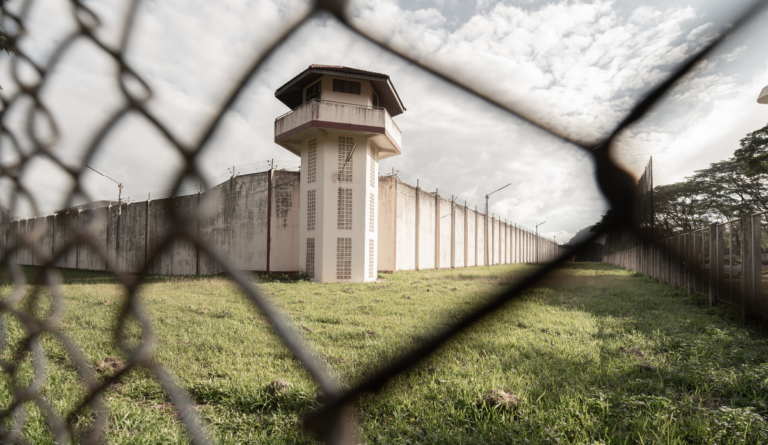Brutality Behind Bars: Forced Sterilization in Prisons
The forced sterilization of individuals in the United States is an act of legally sanctioned reproductive violence.

Read Time: 4 minutes
Published:
Public Health Post is pleased to publish the 2nd place entry in this year’s student essay contest, written by Naomi Michelson.
Thank you to all of the students who took the time to enter this year’s contest by writing about a public health policy that should be prioritized this year.
In 2005, Moonlight Pulido’s uterus was stolen.
While Pulido was an inmate in California’s Valley State Prison for Women, a state doctor recommended she undergo emergency surgery due to presumed cancer risk. Five days after the surgery, Pulido found out her uterus had been removed without her consent. This was not a rare event—70,000 Americans have been sterilized against their will in the last century. The majority of these invasive procedures have been forced upon people of color and people behind bars.
California was the trailblazer of the eugenics movement. The first eugenics law in the state was passed in 1909, allowing individuals admitted to state institutions to be sterilized against their will. Following this, nearly half of all sterilizations in the U.S. were performed in California. Women of color, women on welfare, immigrant women, and those deemed “feeble-minded” were targeted by the new policy.
The forced sterilization of individuals in the United States is an act of legally sanctioned reproductive violence.
Beyond California, eugenics was a mainstream belief that was upheld and codified into national law. Notable eugenicists include Margaret Sanger, founder of Planned Parenthood, who supported the testing of her birth control pill on women in Puerto Rico without their consent. In the 1927 Buck v. Bell case, an 8-1 decision in the Supreme Court ruled that it was legal to forcibly sterilize individuals on the basis of mental illness, disability, poverty, or race. The decision has yet to be overturned.
The forced sterilization of individuals in the United States is an act of legally sanctioned reproductive violence. Compulsory sterilization is a practice that was bolstered by the eugenics movement and continues to act as a function of sexist, racist, and classist control. Importantly – it is not a relic of our distant past. From 2006 to 2010, California forcibly sterilized 150 incarcerated women. Upon further investigation, those chosen to receive the procedure were deemed “likely to return to prison.” It wasn’t until 2014 that the state passed Bill SB 1135 banning sterilization in correctional facilities.
In 2021, California set aside $4.5 million to distribute to individuals who could prove they were forcibly sterilized in state prisons, with each victim who was deemed “eligible” receiving a total of $35,000. Applications opened in 2022 and closed on December 31, 2023. According to the California Victims Compensations Board, 447 people applied, but only 101 were granted reparations, leaving $1.975 million unspent. The board has yet to state where the remaining funds will go.
California’s reparations model fell short due to strict eligibility guidelines, particularly regarding documentation. Many victims could not produce sufficient records “proving” that they were sterilized in a state-run facility due to name changes, improper validation of documents, or the mismanagement of records. On top of that, the outreach only targeted a select group of individuals. The Victims Compensation Board relied on email, television commercials, social media posts, and radio – leaving out those without internet access, those with a language barrier, or those who have moved to another state. Moreover, many victims have died since the bill was passed. Their relatives were not eligible for compensation.
Congress should use the lessons learned from California to implement a joint state and federal reparations program to give back to forced sterilization victims nationwide. The new program should invest in expanded outreach efforts, broaden eligibility guidelines to allow surviving family members to apply on behalf of deceased relatives, and create reproductive justice programs in all state-run facilities. Outside of prisons, a reparations program has the potential to benefit entire communities. The money invested in families affected by incarceration has the potential to reinvigorate neighborhoods at the community level, decreasing intergenerational cycles of poverty and recidivism and cutting state spending on prisons.
In 2023, Pulido received a check for $15,000 from the California government. An additional $20,000 is on the way. Yet the question remains: is monetary compensation alone justice? A reparations program at the national level would demonstrate a commitment to progress in the wake of a century of eugenics, allowing the U.S. government to act as a role model for other countries. Stacy Cordova Diaz, whose aunt was forcibly sterilized for being “sexually deviant” in 1934, said, “I don’t know if [reparations are] justice. Money doesn’t pay for what happened to them. But it’s great to know that this is being recognized. For me, this is not about the money. This is about the memory.”
Photo via Getty Images



